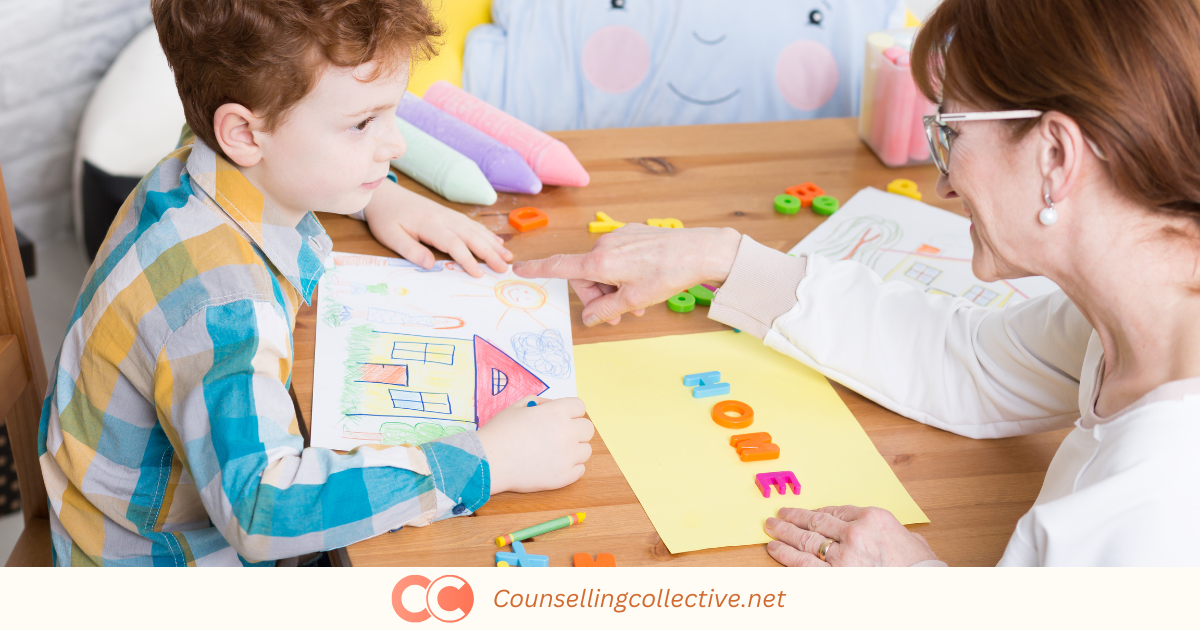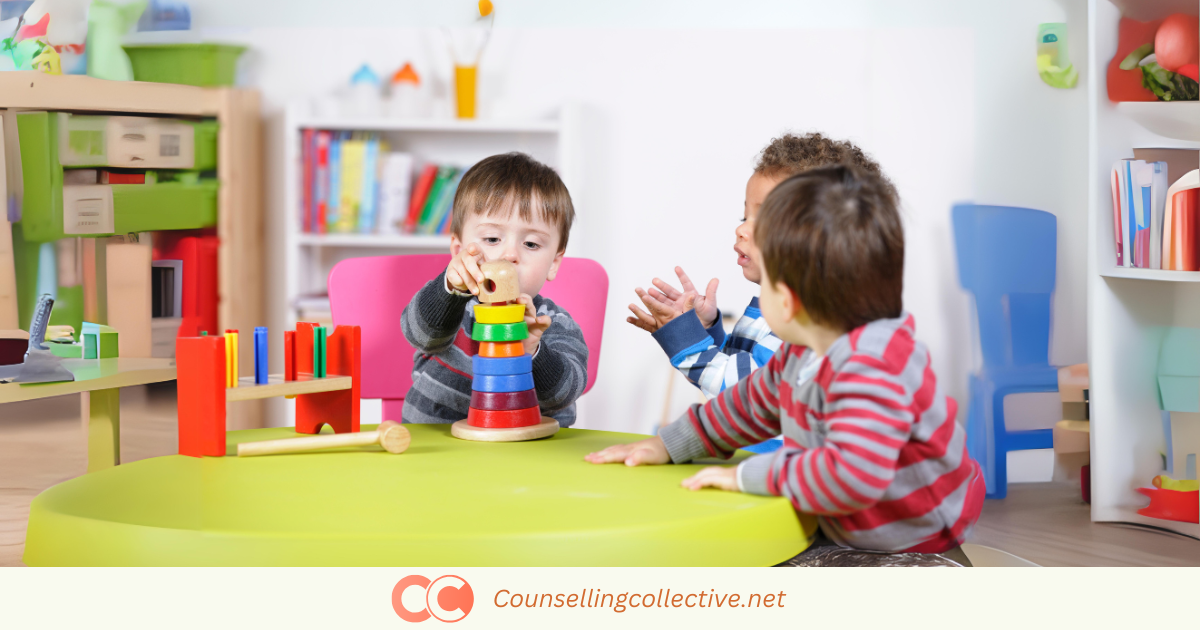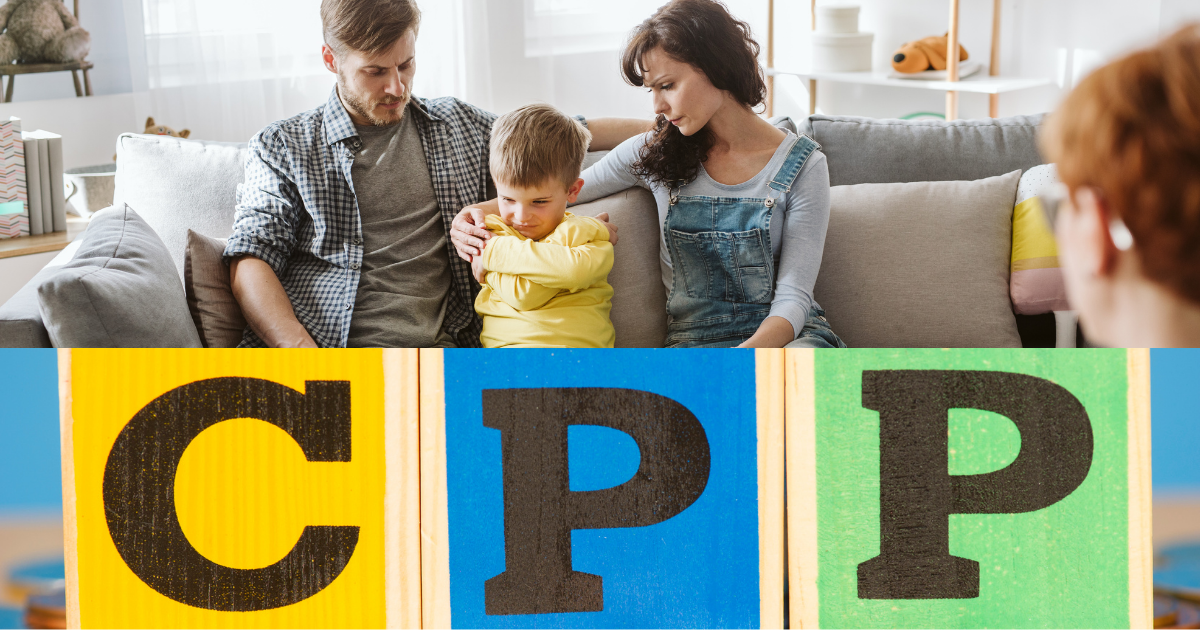Contents
Introduction

Play Therapy – Techniques, Applications, and Effectiveness
Play Therapy is a psychotherapeutic approach that uses play as a means of communication and healing for children. Developed as a method to help children express their emotions, resolve trauma, and develop healthier behaviors, play therapy operates on the idea that play is a child’s natural mode of expression. This article will examine into the foundational principles of Play Therapy, examine its key techniques, explore its applications across different therapeutic contexts, and assess its overall effectiveness. In addition, the article will address common misconceptions and criticisms, while highlighting the importance of this approach in child and adolescent therapy.
What is Play Therapy?
Play Therapy is a therapeutic approach that allows children to express their emotions, thoughts, and experiences through play. First developed by pioneers such as Virginia Axline and Anna Freud, Play Therapy operates under the assumption that children often communicate their emotional states through play, as they may not have the verbal skills to express complex feelings. In Play Therapy, the therapist creates a safe and supportive environment where children can engage in structured or unstructured play, exploring their internal world through the medium of toys, games, and creative expression.
A trained therapist uses play to observe and gain insights into a child’s emotional and behavioral challenges. Through this process, the therapist helps the child explore their feelings and address unresolved trauma. Play Therapy allows children to develop new coping skills and redirect inappropriate behaviors in a supportive environment. This therapeutic approach is practiced by a range of licensed mental health professionals, including psychologists, psychiatrists, behavioral therapists, occupational therapists, physical therapists, and social workers.
Why Play Therapy is Important?
It is critical in treating children and adolescents who have experienced trauma, developmental challenges, or behavioral issues. It offers a unique therapeutic approach that leverages the natural process of play, which is a primary way children learn about and interact with the world. Through engaging in play, children can process difficult emotions, learn coping mechanisms, and develop healthier interpersonal relationships. It is particularly beneficial for children who struggle to verbalize their feelings, offering them an alternative means of communication that feels less intimidating or overwhelming
Real-Life Example: A 6-year-old boy dealing with anxiety following his parents’ divorce begins Play Therapy. In sessions, he uses toy figures to recreate scenes of family conflict, indirectly expressing feelings of fear and confusion. The therapist, by observing these play patterns, gently guides him through processing his emotions. Over time, the boy’s anxiety decreases as he develops better emotional regulation and coping strategies. This therapeutic process also helps him build resilience in navigating his changing family dynamics.
Types Of Play Therapy
- Directive Play Therapy: The therapist takes an active role, guiding the child through specific activities or scenarios to target particular issues, such as fear, anxiety, or aggression. This approach is structured and goal-oriented, allowing therapists to work directly on the problem. It is particularly effective when addressing specific behavioral or emotional concerns.
- Non-Directive Play Therapy (Child-Centered): Based on Virginia Axline’s work, this approach allows the child to take the lead in the play session. The therapist follows the child’s cues and provides a supportive environment where the child feels empowered to express themselves freely. This method fosters autonomy and self-expression in the child.
- Sand Tray Therapy: Children create scenes or narratives using miniature figures and a sandbox. This technique allows children to project their inner worlds, exploring emotions and conflicts symbolically. It is especially useful for helping children express difficult or complex emotions non-verbally.
- Art-Based Play Therapy: Involves activities such as drawing, painting, or sculpting, which allow children to express emotions creatively. Art-based techniques can help children externalize trauma or emotional struggles in ways that may not be accessible through words. This approach can also enhance emotional insight and self-awareness.
Core Concepts
- Symbolic Play: Children often use symbolic actions in play to express their internal conflicts and emotional states, offering a window into their inner world. In Play Therapy, this natural expression is leveraged to help children explore and understand emotions they might struggle to articulate verbally. For example, a child might use dolls to re-enact a troubling experience, allowing them to process and discuss their feelings in a manageable way. Over time, this process helps reduce emotional distress and fosters emotional resilience.
- Therapeutic Alliance: Establishing a strong, supportive relationship between the child and therapist is crucial in Play Therapy. The therapist creates a safe, non-judgmental space where the child feels understood and valued. This alliance fosters trust and facilitates emotional healing, enabling the child to engage more openly in therapeutic activities and explore their emotions more deeply. A strong therapeutic alliance is essential for helping the child feel secure enough to express vulnerable emotions.
- Cognitive and Emotional Development: Play Therapy aids in cognitive and emotional development by helping children process their experiences through play. This approach supports problem-solving skills and enhances emotional regulation and self-awareness. Through guided play, children develop better coping mechanisms, improve their ability to manage emotions, and gain insights into their own behavior and thought processes. It also helps children build the emotional intelligence needed for healthy social interactions and relationships.
Techniques Used in Play Therapy
- Dolls and Role-Play Scenarios: Children use dolls and role-play to act out and process traumatic experiences safely. This method helps them express feelings and fears indirectly, providing a non-threatening way to explore and make sense of their emotions with guidance from the therapist.
- Anger Management Games: These games teach children how to recognize and manage their anger through interactive activities. They learn to identify triggers and use coping strategies, which helps them handle their emotions in a healthier way and improves self-regulation.
- Building with Blocks: Block play allows children to develop problem-solving and social skills in a creative setting. It fosters patience, communication, and cooperation as they build and collaborate. The therapist uses this activity to guide emotional expression and social interaction.
- Board Games: Board games facilitate family interactions and communication by providing structured play. They help family members engage in shared activities, improve problem-solving skills, and resolve conflicts in a supportive environment guided by the therapist.
- Imaginative Play: Imaginative play encourages children to explore emotions and situations through creative scenarios. It allows them to express and process complex feelings in a playful context, helping them develop emotional resilience and problem-solving skills.
Notable Figures in Play Therapy
Virginia Axline: Developed non-directive Play Therapy, emphasizing the child’s inherent capacity for self-healing when placed in a supportive, empathetic environment. Her influential book, Dibs in Search of Self, provides a detailed case study of her approach and remains a seminal text in the field.
Anna Freud: A pioneer in child psychoanalysis, Freud used play as a tool to explore into children’s emotional worlds and unconscious conflicts. Her work integrated play into therapeutic practice, enhancing understanding of child development and internal processes.
Donald Winnicott: Known for his contributions to object relations theory, Winnicott highlighted the significance of play in child development. He introduced the concept of the “transitional object,” which plays a crucial role in a child’s emotional and psychological growth.
Garry Landreth: An advocate for child-centered Play Therapy, Landreth developed principles that emphasize the child’s autonomy and leadership in the therapeutic process. His work underscores the importance of creating a therapeutic environment where children feel empowered to guide their own healing.
Anna Freud- Image Source: britannica.com

Theories Influenced by Play Therapy
- Child-Centered Therapy: Rooted in the non-directive approach, this model emphasizes a supportive, child-led environment. Play Therapy influences Child-Centered Therapy by prioritizing the child’s lead in sessions, creating a space where they feel empowered and understood.
- Trauma-Focused Cognitive Behavioral Therapy (TF-CBT): Play Therapy enhances TF-CBT by integrating play-based methods to help children process trauma in developmentally appropriate ways. This approach uses play to safely explore and express emotions, aligning with TF-CBT’s goal of addressing trauma through structured interventions.
- Art Therapy: The focus on creative expression in Play Therapy aligns closely with Art Therapy. Both approaches utilize non-verbal forms of expression to help individuals explore and address emotional issues, providing a therapeutic outlet for processing feelings.
- Attachment-Based Therapy: Play Therapy supports Attachment-Based Therapy by fostering secure relationships between the child and therapist. Through play, therapists build trust and emotional security, which are essential for effective attachment-based interventions.
Applications of Play Therapy

Trauma Recovery
It is highly effective for children recovering from trauma, such as abuse, neglect, or loss. It provides a secure environment where children can express and process difficult emotions and experiences through play, which can be less intimidating than direct verbal communication.
Example: A child who has experienced domestic violence might engage in Play Therapy with their therapist using dolls and role-play scenarios. This method allows the child to express their feelings and fears indirectly, helping them process the trauma and begin healing.
Image Source: hurleymc.com
Play Therapy helps children with behavioral issues, including aggression, defiance, or impulsivity, by offering a platform for them to express underlying emotional conflicts and develop healthier coping mechanisms.
Example: A child exhibiting aggressive behavior might participate in Play Therapy sessions where they use art materials or role-play to express their frustrations and fears. Techniques such as anger management games and cooperative play are employed to promote self-regulation and improved behavior.
Image Source: parents.com

Behavioral Problems

Developmental Disorders
Play Therapy is beneficial for children with developmental delays, autism, or ADHD by providing a structured environment where they can explore social skills and emotional regulation through tailored activities.
Example: A child with autism might engage in Play Therapy sessions that use sensory play and structured routines to develop social skills and emotional awareness. The therapist might incorporate activities like building with blocks or engaging in simple games to teach the child how to interact with others and manage sensory experiences.
Image Source: drtulikamindcare.com
Certifications Programs Play Therapy
- Association for Play Therapy (APT): APT offers the RPT credential, which is the most recognized certification for play therapists. The certification ensures that therapists meet educational, clinical, and ethical standards necessary to provide therapeutic interventions through play. APT certification emphasizes the importance of play as a medium for emotional healing and development, ensuring that therapists are equipped to work with children in settings like schools, clinics, and mental health centers.
- British Association of Play Therapists (BAPT): BAPT provides professional accreditation for play therapists in the UK, focusing on best practices in therapeutic play. The program integrates clinical practice with child development knowledge to help therapists address emotional and psychological issues in children. BAPT accreditation emphasizes reflective practice and ethical standards, ensuring that therapists use play as an effective tool for emotional expression and healing in various therapeutic settings.
- International Society for Sandplay Therapy (ISST) Certification: ISST offers certification for therapists specializing in sandplay therapy, a specific form of play therapy. The certification includes rigorous training in using sand and symbolic play to help children process trauma and emotional difficulties. ISST-certified therapists are trained to create a safe and supportive environment where children can express themselves non-verbally through sand-based play, promoting emotional healing and cognitive development.
Common Myths About Play Therapy
| Myth | Clarification |
| Play Therapy is just playtime. | Play Therapy is more than just fun; it involves structured activities and therapeutic techniques designed to address emotional, behavioral, and psychological issues. Through guided play, therapists help children explore their feelings and resolve conflicts in a meaningful way. |
| Play Therapy is only for very young children. | While Play Therapy is particularly effective for younger children, it can be adapted for older children and adolescents. Techniques are modified to fit the developmental stage and needs of the child, making it versatile for different ages. |
| Play Therapy is not evidence-based. | Contrary to this belief, Play Therapy is supported by a substantial body of research demonstrating its effectiveness in treating various issues, including trauma, anxiety, and behavioral problems. Meta-analyses and clinical studies provide empirical support for its methods and outcomes. |
| Play Therapy only works with children who have severe problems. | Play Therapy is effective for a range of issues, not just severe problems. It is used to address everyday difficulties, such as adjustment issues, mild anxiety, or family dynamics, as well as more intense emotional and behavioral concerns. |
Criticisms of Play Therapy
- Lack of Standardization: Critics highlight that Play Therapy can sometimes lack a consistent structure, making it difficult to measure its effectiveness across various therapists and clinical settings. This perceived variability can lead to challenges in standardizing the approach for research and broad application. However, ongoing efforts to formalize training protocols are addressing this concern.
- Cultural Applicability: Some critics argue that Play Therapy may not resonate with children from non-Western cultures, as it relies heavily on play, which may not hold the same value in all societies. This cultural mismatch can limit its applicability. Yet, many therapists are adapting Play Therapy techniques to be more culturally inclusive and reflective of diverse backgrounds.
- Overemphasis on Non-Verbal Communication: While Play Therapy is praised for helping non-verbal children, critics argue that it may underutilize opportunities for developing verbal communication skills in children who struggle with self-expression. Striking a balance between play and verbal interactions can enhance its overall impact.
Conclusion
Play Therapy provides a distinctive and powerful approach to aiding children and adolescents in processing emotions, healing from trauma, and fostering healthier behaviors. By harnessing the natural language of play, therapists establish a nurturing and secure environment where children can articulate their thoughts and feelings in a way that bypasses the limitations of verbal communication. This therapeutic modality allows for a deeper exploration of the child’s internal world, often revealing underlying issues that may not be readily expressed through words alone. Despite facing some criticisms regarding its standardization and cultural adaptability, Play Therapy benefits from substantial empirical support and demonstrated effectiveness across various settings. Its capacity to meet children where they are emotionally and facilitate meaningful therapeutic breakthroughs underscores its importance as a vital tool in the realm of child and adolescent mental health treatment.
References
- Axline, V. M. (1964). Dibs in search of self: Personality development in play therapy. Ballantine Books.
- Bratton, S. C., Ray, D., Rhine, T., & Jones, L. (2005). The efficacy of play therapy with children: A meta-analytic review of treatment outcomes. Professional Psychology: Research and Practice, 36(4), 376-390.
- Drewes, A. A. (Ed.). (2011). Blending play therapy with cognitive behavioral therapy: Evidence-based and other effective treatments and techniques. John Wiley & Sons.
- Freud, A. (1928). The psychoanalytic treatment of children. The International Psycho-Analytical Library.
- Gil, E. (1991). The healing power of play: Working with abused children. Guilford Press.
- Landreth, G. L. (2012). Play therapy: The art of the relationship (3rd ed.). Routledge.
- LeBlanc, M., & Ritchie, M. (2001). A meta-analysis of play therapy outcomes. Counseling Psychology Quarterly, 14(2), 149-163.
- Schaefer, C. E. (Ed.). (2011). Foundations of play therapy (2nd ed.). John Wiley & Sons.
- VanFleet, R., Sywulak, A. E., & Sniscak, C. C. (2010). Child-centered play therapy. Guilford Press.
- Winnicott, D. W. (1971). Playing and reality. Routledge.
Explore more Theories & Therapies







